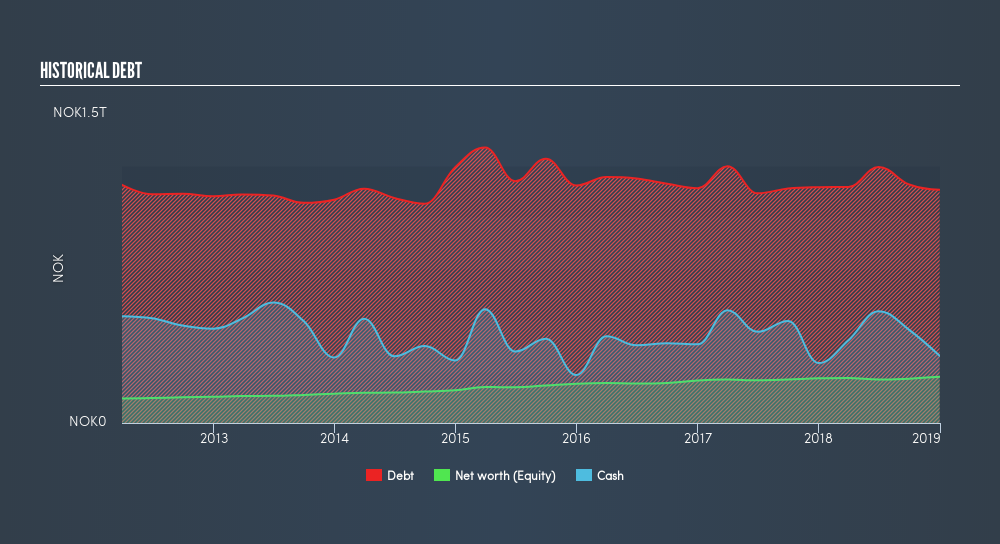
DNB ASA (OB:DNB) is a large-cap stock operating in the financial services sector with a market cap of øre265b. As major financial institutions return to health after the Global Financial Crisis, we are seeing an increase in market confidence, and understanding of, these “too-big-to-fail” banking stocks. A set of reforms called Basel III was imposed in order to strengthen regulation, supervision and risk management in the banking sector. Basel III target banking regulations to improve the sector’s ability to absorb shocks resulting from economic stress which may expose financial institutions like banks to vulnerabilities. Operating in NOK, DNB is held to strict regulation which focus investor attention to the type and level of risk it takes on. Investors should be more cautious when it comes to financial stocks given the different type of risk to which they are exposed. Today we will analyse some bank-specific metrics and take a closer look at leverage and liquidity.
View our latest analysis for DNB

Is DNB's Leverage Level Appropriate?
Banks with low leverage are exposed to lower risks around their ability to repay debt. A bank’s leverage can be thought of as the amount of assets it holds compared to its own shareholders’ funds. Though banks are required to have a certain level of buffer to meet its capital requirements, DNB’s leverage level of 11.76x is significantly below the appropriate ceiling of 20x. This means the bank has a sensibly high level of equity compared to the level of debt it has taken on to maintain operations which places it in a strong position to pay back its debt in unforeseen circumstances. If the bank needs to increase its debt levels to firm up its capital cushion, there is plenty of headroom to do so without deteriorating its financial position.How Should We Measure DNB's Liquidity?
 Due to its illiquid nature, loans are an important asset class we should learn more about. Generally, they should make up less than 70% of total assets, which is consistent with DNB’s state given its ratio of 64%. This means slightly over half of the bank’s total assets are tied up in the form of illiquid loans, leading to a sensible balance between interest income and liquidity.
Due to its illiquid nature, loans are an important asset class we should learn more about. Generally, they should make up less than 70% of total assets, which is consistent with DNB’s state given its ratio of 64%. This means slightly over half of the bank’s total assets are tied up in the form of illiquid loans, leading to a sensible balance between interest income and liquidity. What is DNB's Liquidity Discrepancy?
Banks operate by lending out its customers’ deposits as loans and charge a higher interest rate. Loans are generally fixed term which means they cannot be readily realized, yet customer deposits on the liability side must be paid on-demand and in short notice. This mismatch between illiquid loans and liquid deposits poses a risk for the bank if unusual events occur and requires it to immediately repay its depositors. Relative to the prudent industry loan to deposit level of 90%, DNB’s ratio of over 150% is extremely and unsustainably higher, which places the bank in a dangerous position given the exceedingly high liquidity discrepancy. Essentially, for NOK1 of deposits with the bank, it lends out more than NOK1.5 which is unsustainable.Next Steps:
The bank’s prudent management of its risk levels is reflected in its sensible leverage and liquidity ratios. This means it is well-placed to meet its financial obligations in the case of any adverse and unpredictable macro events. Keep in mind that a stock investment requires research on more than just its operational side. There are three key aspects you should further examine:
- Future Outlook: What are well-informed industry analysts predicting for DNB’s future growth? Take a look at our free research report of analyst consensus for DNB’s outlook.
- Valuation: What is DNB worth today? Has the future growth potential already been factored into the price? The intrinsic value infographic in our free research report helps visualize whether DNB is currently mispriced by the market.
- Other High-Performing Stocks: Are there other stocks that provide better prospects with proven track records? Explore our free list of these great stocks here.
We aim to bring you long-term focused research analysis driven by fundamental data. Note that our analysis may not factor in the latest price-sensitive company announcements or qualitative material.
If you spot an error that warrants correction, please contact the editor at editorial-team@simplywallst.com. This article by Simply Wall St is general in nature. It does not constitute a recommendation to buy or sell any stock, and does not take account of your objectives, or your financial situation. Simply Wall St has no position in the stocks mentioned. Thank you for reading.
Market Insights
Community Narratives



